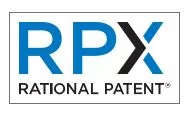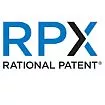The Federal Circuit has doubled down on the requirement that courts evaluating indefiniteness must look beyond the claims themselves. In its January 27 precedential decision in Nature Simulation Systems v. Autodesk, a Federal Circuit majority held that Northern District of California Magistrate Judge Sallie Kim applied an incorrect standard in invalidating claims as indefinite based on "unanswered questions" raised by ambiguity in certain terms. Additionally, the majority ruled that the lower court erred by requiring that such questions be answered by "the claim language, standing alone". Rather, the correct standard is to interpret claims "in light of the specification, the prosecution history, and other relevant evidence", the majority explained. The opinion prompted a dissent from Circuit Judge Timothy Dyk.
Inventor-controlled plaintiff Nature Simulation Systems Inc. (NSS) sued Autodesk in June 2019 over the provision of certain versions of its 3D graphics software, 3DS Max (3:19-cv-03192). The two asserted patents (10,109,105; 10,120,961), per the Federal Circuit's later summary, generally relate to "methods of packaging computer-aided data for three-dimensional objects". In particular, the claims describe a "modified Watson method", an allegedly simpler version of a Boolean operation for "analyzing and representing three-dimensional geometric shapes" that was first published in 1981. Claim construction began in March 2020 after nine months of relatively uneventful litigation, with the parties disputing the construction of eight terms found in both patents.
Judge Kim's Markman Order
Two of those disputed terms formed the basis of Judge Kim's July 2020 Markman order. The first was the phrase "modified Watson method" itself, which an examiner had found to be ambiguously defined during prosecution—leading to amendments that added explanatory language related to "removing duplicate intersection points, identifying positions of end intersection points, and splitting portions of each triangle". While the litigants apparently agreed on a definition of the underlying "Watson method", they disputed how to define "modified". The second term at issue, "searching neighboring triangles of the last triangle pair that holds the last intersection point", followed language describing a method of locating such "intersection point[s]" between two geographic objects.
Autodesk argued that both terms were ambiguous, with its expert testifying that neither term (nor the aforementioned explanatory language added via amendment) had a plain and ordinary meaning to a person with ordinary skill in the art (POSITA). NSS, for its part, argued that a POSITA would understand the terms based solely on intrinsic evidence (which, as a general matter, includes the patent claims, specification, and prosecution history).
The question here, Judge Kim held, was how to determine whether a term is indefinite "if the PTO issues a patent after amendment to clarify an indefinite term, but an expert later opines that a POSITA would not understand the term". "The only way to do so here", Judge Kim determined, was "to look at each argument to see if Autodesk raises any unanswered questions"—finding that the defendant had done so. Judge Kim then proceeded to review several such questions raised by Autodesk's expert for the disputed terms, evaluating DSS's arguments by focusing solely on whether language in the claims themselves sufficiently resolved the alleged ambiguity—noting that her decision was based on the "claim language, standing alone" (a statement made as to one term, but reflecting the approach used throughout). For each term at issue, Judge Kim cited the fact that NSS had not responded to those questions as "highlight[ing] the ambiguity of the claim language" and, as a result, ruled that the terms were indefinite, rendering the claims that include them invalid.
Judge Kim then issued a judgment the following month, confirming the invalidation of the asserted claims (claim 1 of the '105 patent and claims 1 and 8 of the '961 patent) but extending the deadline for Autodesk to seek attorney fees and costs until the conclusion of its appeal. DSS filed that appeal in September 2020 (2020-2257).
The Federal Circuit's Majority Opinion
The Federal Circuit's majority opinion, authored by Circuit Judge Pauline Newman, began by reviewing the legal basis for the definiteness standard under 35 USC Section 112. As the Supreme Court established in its 2014 Nautilus v. Biosig Instruments decision, the Federal Circuit then noted that a patent's "claims are viewed and understood in the context of the specification and the prosecution history". When a claim's meaning or scope is disputed, the majority held, courts must construe those claims in light of both intrinsic evidence—including "the words of the claims themselves, the remainder of the specification, the prosecution history"—as well as "extrinsic evidence concerning relevant scientific principles, the meaning of technical terms, and the state of the art" (citation omitted).
For this reason, the majority determined that Judge Kim had erred by failing to consider all requisite sources of evidence, and the "unanswered questions" approach that she instead followed was an "incorrect standard". In particular, the majority ruled that "'[c]laim language, standing alone' is not the correct standard of law, and is contrary to uniform precedent". A court must view and interpret claims in light of intrinsic and extrinsic evidence "as 'would have allowed a skilled artisan to know the scope of the claimed invention with reasonable certainty'" (citation omitted).
A correct approach would have then required the court to construe the disputed claims in light of the aforementioned types of evidence, which the Federal Circuit majority then proceeded to do for the two claim terms on appeal. For the term "searching neighboring triangles of the last triangle pair that holds the last intersection point", the majority found that three of the unanswered questions raised by the district court were answered in the specification, which describes the prior art "in text and drawings to show how they are used and modified in the subject invention". Judge Kim erred by not viewing the claims in light of this knowledge and by limiting her analysis of the specification to information contained in the claims, the majority held, underscoring that in doing so "[t]he district court misperceived the function of patent claims".
Additionally, the majority determined that the district court erred by not considering the prosecution history—more specifically, by "rejecting the examiner's conclusion as to indefiniteness" for the amendments that overcame an initial rejection on that basis. By giving "no weight to the prosecution history showing the resolution of indefiniteness by adding the designated technologic limitations to the claims", the lower court had failed to give the "appropriate deference" to the examiner's decision, an official agency action, under Federal Circuit law": "[E]xaminers deemed to be experienced in the relevant technology as well as the statutory requirements for patentability".
Based on this evaluation of the full complement of evidence required under Federal Circuit precedent, the majority found that "[t]he subject matter herein is an improvement on the known . . . methods, and partakes of known usages for established technologies". The present case was analogous to the Federal Circuit's 2017 decision in Presidio Components v. American Technical Ceramics, which established that claims are not indefinite where "the general approach was sufficiently well established in the art and referenced in the patent", determined the majority:
It is not disputed that the specification describes and enables practice of the claimed method, including the best mode. The claims, as amended during prosecution, were held by the examiner to distinguish the claimed method from the prior art and to define the scope of the patented subject matter. The district court made no contrary findings. Indefiniteness under 35 U.S.C. § 112 was not established as a matter of law.
The majority then concluded by reversing the lower court's decision invalidating the asserted claims and remanded for further proceedings.
Judge Dyk's Dissent
Circuit Judge Timothy Dyk dissented, arguing that the majority had mischaracterized the district court's decision as applying an "unanswered questions" standard. Rather, Judge Dyk countered, Judge Kim performed a "a detailed and thorough analysis . . . [that] read the patent's claims in light of the specification to determine if it would inform those skilled in the art about the scope of the invention with reasonable certainty", in a manner that "exactly" satisfied the requirements of Nautilus.
Moreover, Judge Dyk asserted that the majority erred in its de novo claim construction analysis, as "claim 1 adds limitations not found in Figures 12A–H or 13"—the drawings cited in the majority's analysis of the specification as partly defining the "modified Watson method". "Even more significant, nothing in the patent specification defines what these additional limitations mean". The majority failed to address this issue, determined Judge Dyk, because it had shown too much deference to the examiner. "The fact that a patent examiner introduced the indefinite language does not absolve the claims from the requirements of 35 U.S.C. § 112"—and "[t]here is no reasonable basis in the claims or specification for the majority's decision".
The content of this article is intended to provide a general guide to the subject matter. Specialist advice should be sought about your specific circumstances.


